MPSA42 NPN Transistor: Pinout, Datasheet and Replacement
MPSA42 Series NPN 625 mW 300V 500mA Through Hole Small Signal Transistor - TO-92









MPSA42 Series NPN 625 mW 300V 500mA Through Hole Small Signal Transistor - TO-92
MPSA42 is an NPN silicon high voltage transistor. This article mainly covers pinout, datasheet, current, equivalent, and more details about the MPSA42 NPN transistor. Furthermore, there is a huge range of semiconductors, resistors, capacitors, and Ics in stock. Welcome your RFQ!

how to use your transistor as a switch - simplest way!
MPSA42 Pinout

MPSA42 Pinout
| Pin Number | Pin Name | Description |
| 1 | Emitter | Current Drains out through emitter |
| 2 | Base | Controls the biasing of transistor |
| 3 | Collector | Current flows in through collector |
MPSA42 CAD Model
Footprint
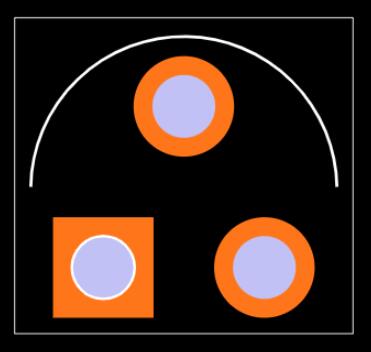
Footprint
Overview of MPSA42
The MPSA42 is a common NPN transistor that has been widely employed in high-voltage switching and amplification applications. It's a more advanced type of amplifier with enhanced over-voltage and voltage break-down safety. When compared to traditional type amplifiers such as the LM741 OP-AMP, it is extremely adequate with a low collector current amplifier. It's constructed of silicon and comes in a typical TO-92 package that's easy to find. What’s more, the MPSA42 has a 300volts emitter to collector voltage.
Specifications
- TypeParameter
- Lifecycle Status
Lifecycle Status refers to the current stage of an electronic component in its product life cycle, indicating whether it is active, obsolete, or transitioning between these states. An active status means the component is in production and available for purchase. An obsolete status indicates that the component is no longer being manufactured or supported, and manufacturers typically provide a limited time frame for support. Understanding the lifecycle status is crucial for design engineers to ensure continuity and reliability in their projects.
ACTIVE (Last Updated: 3 days ago) - Factory Lead Time34 Weeks
- Mount
In electronic components, the term "Mount" typically refers to the method or process of physically attaching or fixing a component onto a circuit board or other electronic device. This can involve soldering, adhesive bonding, or other techniques to secure the component in place. The mounting process is crucial for ensuring proper electrical connections and mechanical stability within the electronic system. Different components may have specific mounting requirements based on their size, shape, and function, and manufacturers provide guidelines for proper mounting procedures to ensure optimal performance and reliability of the electronic device.
Through Hole - Mounting Type
The "Mounting Type" in electronic components refers to the method used to attach or connect a component to a circuit board or other substrate, such as through-hole, surface-mount, or panel mount.
Through Hole - Package / Case
refers to the protective housing that encases an electronic component, providing mechanical support, electrical connections, and thermal management.
TO-226-3, TO-92-3 (TO-226AA) - Number of Pins3
- Supplier Device Package
The parameter "Supplier Device Package" in electronic components refers to the physical packaging or housing of the component as provided by the supplier. It specifies the form factor, dimensions, and layout of the component, which are crucial for compatibility and integration into electronic circuits and systems. The supplier device package information typically includes details such as the package type (e.g., DIP, SOP, QFN), number of pins, pitch, and overall size, allowing engineers and designers to select the appropriate component for their specific application requirements. Understanding the supplier device package is essential for proper component selection, placement, and soldering during the manufacturing process to ensure optimal performance and reliability of the electronic system.
TO-92-3 - Weight201mg
- Collector-Emitter Breakdown Voltage300V
- Collector-Emitter Saturation Voltage500mV
- Current-Collector (Ic) (Max)500mA
- Number of Elements1
- hFEMin40
- Operating Temperature
The operating temperature is the range of ambient temperature within which a power supply, or any other electrical equipment, operate in. This ranges from a minimum operating temperature, to a peak or maximum operating temperature, outside which, the power supply may fail.
-55°C~150°C TJ - Packaging
Semiconductor package is a carrier / shell used to contain and cover one or more semiconductor components or integrated circuits. The material of the shell can be metal, plastic, glass or ceramic.
Bulk - Published2009
- Part Status
Parts can have many statuses as they progress through the configuration, analysis, review, and approval stages.
Active - Moisture Sensitivity Level (MSL)
Moisture Sensitivity Level (MSL) is a standardized rating that indicates the susceptibility of electronic components, particularly semiconductors, to moisture-induced damage during storage and the soldering process, defining the allowable exposure time to ambient conditions before they require special handling or baking to prevent failures
1 (Unlimited) - Max Operating Temperature
The Maximum Operating Temperature is the maximum body temperature at which the thermistor is designed to operate for extended periods of time with acceptable stability of its electrical characteristics.
150°C - Min Operating Temperature
The "Min Operating Temperature" parameter in electronic components refers to the lowest temperature at which the component is designed to operate effectively and reliably. This parameter is crucial for ensuring the proper functioning and longevity of the component, as operating below this temperature may lead to performance issues or even damage. Manufacturers specify the minimum operating temperature to provide guidance to users on the environmental conditions in which the component can safely operate. It is important to adhere to this parameter to prevent malfunctions and ensure the overall reliability of the electronic system.
-55°C - Voltage - Rated DC
Voltage - Rated DC is a parameter that specifies the maximum direct current (DC) voltage that an electronic component can safely handle without being damaged. This rating is crucial for ensuring the proper functioning and longevity of the component in a circuit. Exceeding the rated DC voltage can lead to overheating, breakdown, or even permanent damage to the component. It is important to carefully consider this parameter when designing or selecting components for a circuit to prevent any potential issues related to voltage overload.
300V - Max Power Dissipation
The maximum power that the MOSFET can dissipate continuously under the specified thermal conditions.
625mW - Current Rating
Current rating is the maximum current that a fuse will carry for an indefinite period without too much deterioration of the fuse element.
500mA - Frequency
In electronic components, the parameter "Frequency" refers to the rate at which a signal oscillates or cycles within a given period of time. It is typically measured in Hertz (Hz) and represents how many times a signal completes a full cycle in one second. Frequency is a crucial aspect in electronic components as it determines the behavior and performance of various devices such as oscillators, filters, and communication systems. Understanding the frequency characteristics of components is essential for designing and analyzing electronic circuits to ensure proper functionality and compatibility with other components in a system.
50MHz - Base Part Number
The "Base Part Number" (BPN) in electronic components serves a similar purpose to the "Base Product Number." It refers to the primary identifier for a component that captures the essential characteristics shared by a group of similar components. The BPN provides a fundamental way to reference a family or series of components without specifying all the variations and specific details.
MPSA42 - Polarity
In electronic components, polarity refers to the orientation or direction in which the component must be connected in a circuit to function properly. Components such as diodes, capacitors, and LEDs have polarity markings to indicate which terminal should be connected to the positive or negative side of the circuit. Connecting a component with incorrect polarity can lead to malfunction or damage. It is important to pay attention to polarity markings and follow the manufacturer's instructions to ensure proper operation of electronic components.
NPN - Voltage
Voltage is a measure of the electric potential difference between two points in an electrical circuit. It is typically represented by the symbol "V" and is measured in volts. Voltage is a crucial parameter in electronic components as it determines the flow of electric current through a circuit. It is responsible for driving the movement of electrons from one point to another, providing the energy needed for electronic devices to function properly. In summary, voltage is a fundamental concept in electronics that plays a key role in the operation and performance of electronic components.
300V - Element Configuration
The distribution of electrons of an atom or molecule (or other physical structure) in atomic or molecular orbitals.
Single - Current
In electronic components, "Current" refers to the flow of electric charge through a conductor or semiconductor material. It is measured in amperes (A) and represents the rate at which electric charge is moving past a specific point in a circuit. Current is a crucial parameter in electronics as it determines the amount of power being consumed or delivered by a component. Understanding and controlling current is essential for designing and operating electronic circuits efficiently and safely. In summary, current is a fundamental electrical quantity that plays a key role in the functionality and performance of electronic components.
500mA - Power Dissipation
the process by which an electronic or electrical device produces heat (energy loss or waste) as an undesirable derivative of its primary action.
625mW - Power - Max
Power - Max is a parameter that specifies the maximum amount of power that an electronic component can handle without being damaged. It is typically measured in watts and indicates the upper limit of power that can be safely supplied to the component. Exceeding the maximum power rating can lead to overheating, malfunction, or permanent damage to the component. It is important to consider the power-max rating when designing circuits or systems to ensure proper operation and longevity of the electronic components.
625mW - Gain Bandwidth Product
The gain–bandwidth product (designated as GBWP, GBW, GBP, or GB) for an amplifier is the product of the amplifier's bandwidth and the gain at which the bandwidth is measured.
50MHz - Transistor Type
Transistor type refers to the classification of transistors based on their operation and construction. The two primary types are bipolar junction transistors (BJTs) and field-effect transistors (FETs). BJTs use current to control the flow of current, while FETs utilize voltage to control current flow. Each type has its own subtypes, such as NPN and PNP for BJTs, and MOSFETs and JFETs for FETs, impacting their applications and characteristics in electronic circuits.
NPN - Collector Emitter Voltage (VCEO)
Collector-Emitter Voltage (VCEO) is a key parameter in electronic components, particularly in transistors. It refers to the maximum voltage that can be applied between the collector and emitter terminals of a transistor while the base terminal is open or not conducting. Exceeding this voltage limit can lead to breakdown and potential damage to the transistor. VCEO is crucial for ensuring the safe and reliable operation of the transistor within its specified limits. Designers must carefully consider VCEO when selecting transistors for a circuit to prevent overvoltage conditions that could compromise the performance and longevity of the component.
300V - Max Collector Current
Max Collector Current is a parameter used to specify the maximum amount of current that can safely flow through the collector terminal of a transistor or other electronic component without causing damage. It is typically expressed in units of amperes (A) and is an important consideration when designing circuits to ensure that the component operates within its safe operating limits. Exceeding the specified max collector current can lead to overheating, degradation of performance, or even permanent damage to the component. Designers must carefully consider this parameter when selecting components and designing circuits to ensure reliable and safe operation.
200mA - DC Current Gain (hFE) (Min) @ Ic, Vce
The parameter "DC Current Gain (hFE) (Min) @ Ic, Vce" in electronic components refers to the minimum value of the DC current gain, denoted as hFE, under specific operating conditions of collector current (Ic) and collector-emitter voltage (Vce). The DC current gain hFE represents the ratio of the collector current to the base current in a bipolar junction transistor (BJT), indicating the amplification capability of the transistor. The minimum hFE value at a given Ic and Vce helps determine the transistor's performance and efficiency in amplifying signals within a circuit. Designers use this parameter to ensure proper transistor selection and performance in various electronic applications.
40 @ 30mA 10V - Current - Collector Cutoff (Max)
The parameter "Current - Collector Cutoff (Max)" refers to the maximum current at which a transistor or other electronic component will cease to conduct current between the collector and emitter terminals. This parameter is important in determining the maximum current that can flow through the component when it is in the cutoff state. Exceeding this maximum cutoff current can lead to malfunction or damage of the component. It is typically specified in the component's datasheet and is crucial for proper circuit design and operation.
100nA ICBO - Vce Saturation (Max) @ Ib, Ic
The parameter "Vce Saturation (Max) @ Ib, Ic" in electronic components refers to the maximum voltage drop across the collector-emitter junction when the transistor is in saturation mode. This parameter is specified at a certain base current (Ib) and collector current (Ic) levels. It indicates the minimum voltage required to keep the transistor fully conducting in saturation mode, ensuring that the transistor operates efficiently and does not enter the cutoff region. Designers use this parameter to ensure proper transistor operation and to prevent overheating or damage to the component.
500mV @ 2mA, 20mA - Voltage - Collector Emitter Breakdown (Max)
Voltage - Collector Emitter Breakdown (Max) is a parameter that specifies the maximum voltage that can be applied between the collector and emitter terminals of a transistor or other semiconductor device before it breaks down and allows excessive current to flow. This parameter is crucial for ensuring the safe and reliable operation of the component within its specified limits. Exceeding the maximum breakdown voltage can lead to permanent damage or failure of the device. Designers and engineers must carefully consider this parameter when selecting components for their circuits to prevent potential issues and ensure proper functionality.
300V - Max Frequency
Max Frequency refers to the highest frequency at which an electronic component can operate effectively without degradation of performance. It is a critical parameter for devices such as transistors, capacitors, and oscillators, indicating their limitations in speed and response time. Exceeding the max frequency can lead to issues like signal distortion, heat generation, and potential failure of the component. Understanding this parameter is essential for designing circuits to ensure reliable and efficient operation.
50MHz - Frequency - Transition
The parameter "Frequency - Transition" in electronic components refers to the maximum frequency at which a signal transition can occur within the component. It is a crucial specification for digital circuits as it determines the speed at which data can be processed and transmitted. A higher frequency transition allows for faster operation and better performance of the electronic component. It is typically measured in hertz (Hz) or megahertz (MHz) and is specified by the manufacturer to ensure proper functioning of the component within a given frequency range.
50MHz - Collector Base Voltage (VCBO)
Collector Base Voltage (VCBO) is the maximum allowable voltage that can be applied between the collector and base terminals of a bipolar junction transistor when the emitter is open. It is a critical parameter that determines the voltage rating of the transistor and helps prevent breakdown in the collector-base junction. Exceeding this voltage can lead to permanent damage or failure of the component.
300V - Emitter Base Voltage (VEBO)
Emitter Base Voltage (VEBO) is a parameter used in electronic components, particularly in transistors. It refers to the maximum voltage that can be applied between the emitter and base terminals of a transistor without causing damage to the device. Exceeding this voltage limit can lead to breakdown of the transistor and potential failure. VEBO is an important specification to consider when designing circuits to ensure the proper operation and reliability of the components. It is typically provided in the datasheet of the transistor and should be carefully observed to prevent any potential damage during operation.
6V - Height4.7mm
- Length4.7mm
- Width3.93mm
- REACH SVHC
The parameter "REACH SVHC" in electronic components refers to the compliance with the Registration, Evaluation, Authorization, and Restriction of Chemicals (REACH) regulation regarding Substances of Very High Concern (SVHC). SVHCs are substances that may have serious effects on human health or the environment, and their use is regulated under REACH to ensure their safe handling and minimize their impact.Manufacturers of electronic components need to declare if their products contain any SVHCs above a certain threshold concentration and provide information on the safe use of these substances. This information allows customers to make informed decisions about the potential risks associated with using the components and take appropriate measures to mitigate any hazards.Ensuring compliance with REACH SVHC requirements is essential for electronics manufacturers to meet regulatory standards, protect human health and the environment, and maintain transparency in their supply chain. It also demonstrates a commitment to sustainability and responsible manufacturing practices in the electronics industry.
No SVHC - Radiation Hardening
Radiation hardening is the process of making electronic components and circuits resistant to damage or malfunction caused by high levels of ionizing radiation, especially for environments in outer space (especially beyond the low Earth orbit), around nuclear reactors and particle accelerators, or during nuclear accidents or nuclear warfare.
No - RoHS Status
RoHS means “Restriction of Certain Hazardous Substances” in the “Hazardous Substances Directive” in electrical and electronic equipment.
ROHS3 Compliant - Lead Free
Lead Free is a term used to describe electronic components that do not contain lead as part of their composition. Lead is a toxic material that can have harmful effects on human health and the environment, so the electronics industry has been moving towards lead-free components to reduce these risks. Lead-free components are typically made using alternative materials such as silver, copper, and tin. Manufacturers must comply with regulations such as the Restriction of Hazardous Substances (RoHS) directive to ensure that their products are lead-free and environmentally friendly.
Lead Free
MPSA42 Features
Type: NPN bipolar transistor
The gain in DC: 40.
Collector- emitter voltage: 300V
Collector -base voltage: 300V
The base voltage of the emitter: 6V.
Transition frequency: 50MHz
Maximum operating junction temperature: +150C0
Collector base capacitance: 3pF
The forward current transfer ratio must be at least 25.
Continuous collector current: 500mA
Maximum collector power dissipation: 0.625W
Thermal resistance from junction to ambient: 200C0/W
Current cutoff for the collector: 0.1A
MPSA42 Applications
High voltage switching
In Audio amplifiers
Low current motor drive circuits
High power LED diver circuits
Speed control stepper motor circuits
Various temperature control circuits
Communication circuits
Analog to digital converters
MPSA42 Equivalents
You can replace MPSA42 with KST42, MMBTA42, and PZTA42.
Where to use MPSA42
The MPSA42 is an NPN transistor with a high voltage. A transistor can be used as a switch or an amplifier, but due to its low gain value of 30, this transistor is commonly used only for switching. Because the MPSA42 can turn on or off high voltage loads (up to 300V), it is frequently utilized for heavy loads or loads with a high peak voltage. Also, because the IC's collector current is 500mA (0.5A), you won't be able to drive loads that require a lot of currents. Because it has a 6V Base-Emitter voltage, it can be easily controlled with microcontrollers or other digital devices.
Therefore, if you're seeking an NPN transistor that can switch high voltages while maintaining a reasonable current flow, the MPSA42 transistor could be the one for you.
How to use MPSA42
In the following circuit, the NPN transistor will be employed as a switch in a motor control circuit. Because the MPSA42 transistor is often used for high voltage switching, we'll show you how to utilize it to turn on and off a high voltage dc motor (48V). The motor is connected to this NPN transistor as shown in the diagram below.
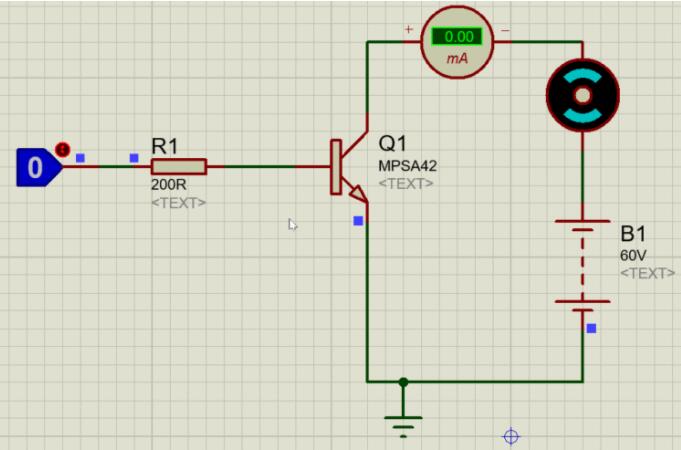
MPSA42 Circuit
A 1K resistor is used to apply 5V dc voltages to the base pin. The formula RB= VBE / IB is used to compute the value of this resistor. Where we know that if VBE is 5V and IB is 500mA, RB is 1K. When 5Votls is applied to the base pin, current flows and the transistor connects to the ground, causing the motor to turn on. When the base pin receives zero volts, no current flows, the transistor does not connect to the ground, and the motor does not turn on.
Parts with Similar Specs
- ImagePart NumberManufacturerMountPackage / CasePolarityCollector Emitter Breakdown VoltageVoltage - Collector Emitter Breakdown (Max)Max Collector CurrentFrequency - TransitionCollector Emitter Saturation VoltagehFE MinMax Power DissipationView Compare
MPSA42
Through Hole
TO-226-3, TO-92-3 (TO-226AA)
NPN
300 V
300V
200 mA
50MHz
500 mV
40
625 mW
Through Hole
TO-226-3, TO-92-3 (TO-226AA)
-
300 V
-
500 mA
-
500 mV
40
625 mW
Through Hole
TO-226-3, TO-92-3 (TO-226AA)
-
350 V
-
500 mA
-
1 V
30
625 mW
Through Hole
TO-226-3, TO-92-3 (TO-226AA)
NPN
200 V
200V
500 mA
50MHz
500 mV
50
625 mW
MPSA42 Dimension


MPSA42 Dimension
MPSA42 Manufacturer
On Semiconductor (Nasdaq: ON) is a manufacturer engaging itself in reducing energy use. It features a comprehensive portfolio of power, signal management, and logic, custom solutions that are energy efficient. It acts as a world-class supply chain with high reliability and a network of manufacturing facilities, sales, offices, and design centers in key markets through North America, Europe, and the Asia Pacific regions.
Datasheet PDF
- PCN Obsolescence/ EOL :
- PCN Assembly/Origin :
- Datasheets :
- PCN Packaging :
- Environmental Information :
- PCN Design/Specification :
What is MPSA42 used for?
MPSA42 transistor is normally used to switch high voltage loads or loads that have high peak voltages. When a transistor is used as a switch it is operated in the Saturation and Cut-Off Region as explained above.
What type of transistor can be used to replace the transistor F422?
You can use MPSA42 instead. Or buy BF422 directly.
Where to use MPSA42?
The MPSA42 can turn on or turn off high voltage loads (up to 300V) hence they are commonly used for heavy loads or loads that have high peak voltage. Also, note that the collector current of the IC is 500mA (0.5A) hence you cannot drive loads that might consume high current.
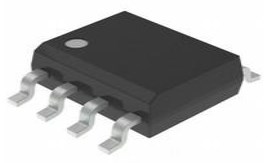 AT24C16C I²C-Compatible Serial EEPROM: Pinout, Equivalent and Datasheet
AT24C16C I²C-Compatible Serial EEPROM: Pinout, Equivalent and Datasheet07 March 2022342
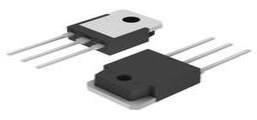 2SD1047 Transistor: Circuit, Pinout, and Datasheet
2SD1047 Transistor: Circuit, Pinout, and Datasheet25 November 20216973
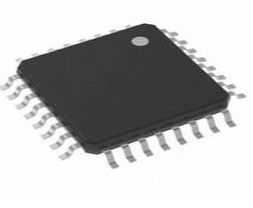 ATMEGA328P-AU MT Microcontroller 8-Bit 32TQFP: Datasheet, Pinout, Schematic
ATMEGA328P-AU MT Microcontroller 8-Bit 32TQFP: Datasheet, Pinout, Schematic21 January 20224575
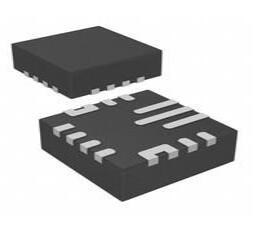 TPS63070RNMT 2V-16V Wide Input Voltage Buck-Boost Converter, TPS63070 Datasheet pdf
TPS63070RNMT 2V-16V Wide Input Voltage Buck-Boost Converter, TPS63070 Datasheet pdf16 February 20225389
![74LS86 Quad 2-Input XOR Gate IC: Pin, Datasheet pdf and Circuit Using 7486 Gate [FAQ]](https://res.utmel.com/Images/Article/b86c4a92-48b3-4a15-9a39-0fbf4ed13c63.jpg) 74LS86 Quad 2-Input XOR Gate IC: Pin, Datasheet pdf and Circuit Using 7486 Gate [FAQ]
74LS86 Quad 2-Input XOR Gate IC: Pin, Datasheet pdf and Circuit Using 7486 Gate [FAQ]08 December 202113452
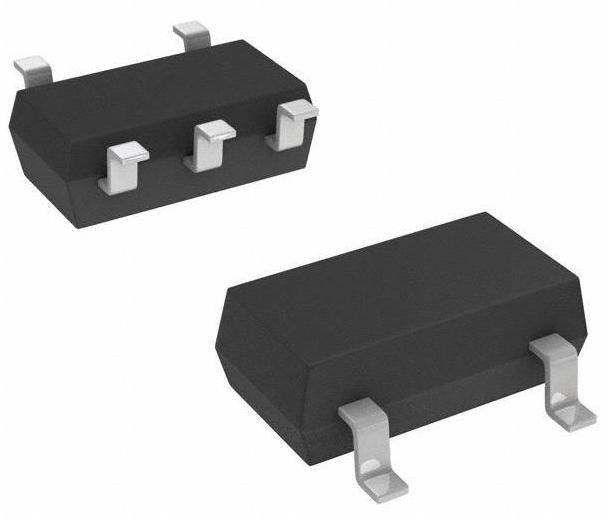 NC7SZ125P5X: Overview, Features, and Applications
NC7SZ125P5X: Overview, Features, and Applications19 December 2023448
 Microchip PIC16F1829ESS Microcontroller Datasheet Overview
Microchip PIC16F1829ESS Microcontroller Datasheet Overview29 February 202483
 An Overview of Analog Devices Inc. 5962-8856501CA Linear Amplifier
An Overview of Analog Devices Inc. 5962-8856501CA Linear Amplifier06 March 202498
 An overview of Flip-flop
An overview of Flip-flop10 December 20203710
 8051 Microcontroller: History, Architecture, Applications, and Features
8051 Microcontroller: History, Architecture, Applications, and Features20 February 202117865
 TSMC's Global Distribution
TSMC's Global Distribution25 March 20222840
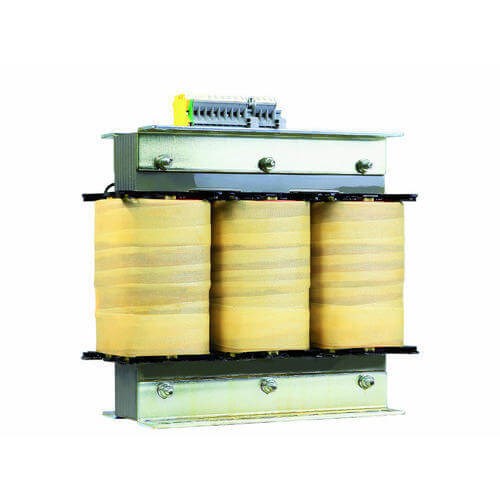 An Overview of Isolation Transformers
An Overview of Isolation Transformers17 September 202012174
 Top 10 Popular Semiconductor Companies in 2022
Top 10 Popular Semiconductor Companies in 202214 January 202211018
 How does the CPU recognize the Code?
How does the CPU recognize the Code?08 August 20221075
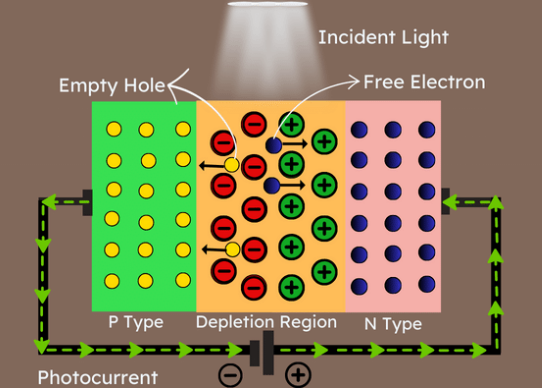 Understanding Photodiodes: Working Principles and Applications - Part 2
Understanding Photodiodes: Working Principles and Applications - Part 224 May 20243540
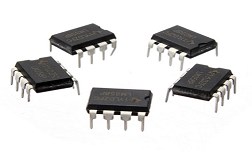 Low-Power Design of Operational Amplifiers
Low-Power Design of Operational Amplifiers27 March 20254477
ON Semiconductor
In Stock: 5427
United States
China
Canada
Japan
Russia
Germany
United Kingdom
Singapore
Italy
Hong Kong(China)
Taiwan(China)
France
Korea
Mexico
Netherlands
Malaysia
Austria
Spain
Switzerland
Poland
Thailand
Vietnam
India
United Arab Emirates
Afghanistan
Åland Islands
Albania
Algeria
American Samoa
Andorra
Angola
Anguilla
Antigua & Barbuda
Argentina
Armenia
Aruba
Australia
Azerbaijan
Bahamas
Bahrain
Bangladesh
Barbados
Belarus
Belgium
Belize
Benin
Bermuda
Bhutan
Bolivia
Bonaire, Sint Eustatius and Saba
Bosnia & Herzegovina
Botswana
Brazil
British Indian Ocean Territory
British Virgin Islands
Brunei
Bulgaria
Burkina Faso
Burundi
Cabo Verde
Cambodia
Cameroon
Cayman Islands
Central African Republic
Chad
Chile
Christmas Island
Cocos (Keeling) Islands
Colombia
Comoros
Congo
Congo (DRC)
Cook Islands
Costa Rica
Côte d’Ivoire
Croatia
Cuba
Curaçao
Cyprus
Czechia
Denmark
Djibouti
Dominica
Dominican Republic
Ecuador
Egypt
El Salvador
Equatorial Guinea
Eritrea
Estonia
Eswatini
Ethiopia
Falkland Islands
Faroe Islands
Fiji
Finland
French Guiana
French Polynesia
Gabon
Gambia
Georgia
Ghana
Gibraltar
Greece
Greenland
Grenada
Guadeloupe
Guam
Guatemala
Guernsey
Guinea
Guinea-Bissau
Guyana
Haiti
Honduras
Hungary
Iceland
Indonesia
Iran
Iraq
Ireland
Isle of Man
Israel
Jamaica
Jersey
Jordan
Kazakhstan
Kenya
Kiribati
Kosovo
Kuwait
Kyrgyzstan
Laos
Latvia
Lebanon
Lesotho
Liberia
Libya
Liechtenstein
Lithuania
Luxembourg
Macao(China)
Madagascar
Malawi
Maldives
Mali
Malta
Marshall Islands
Martinique
Mauritania
Mauritius
Mayotte
Micronesia
Moldova
Monaco
Mongolia
Montenegro
Montserrat
Morocco
Mozambique
Myanmar
Namibia
Nauru
Nepal
New Caledonia
New Zealand
Nicaragua
Niger
Nigeria
Niue
Norfolk Island
North Korea
North Macedonia
Northern Mariana Islands
Norway
Oman
Pakistan
Palau
Palestinian Authority
Panama
Papua New Guinea
Paraguay
Peru
Philippines
Pitcairn Islands
Portugal
Puerto Rico
Qatar
Réunion
Romania
Rwanda
Samoa
San Marino
São Tomé & Príncipe
Saudi Arabia
Senegal
Serbia
Seychelles
Sierra Leone
Sint Maarten
Slovakia
Slovenia
Solomon Islands
Somalia
South Africa
South Sudan
Sri Lanka
St Helena, Ascension, Tristan da Cunha
St. Barthélemy
St. Kitts & Nevis
St. Lucia
St. Martin
St. Pierre & Miquelon
St. Vincent & Grenadines
Sudan
Suriname
Svalbard & Jan Mayen
Sweden
Syria
Tajikistan
Tanzania
Timor-Leste
Togo
Tokelau
Tonga
Trinidad & Tobago
Tunisia
Turkey
Turkmenistan
Turks & Caicos Islands
Tuvalu
U.S. Outlying Islands
U.S. Virgin Islands
Uganda
Ukraine
Uruguay
Uzbekistan
Vanuatu
Vatican City
Venezuela
Wallis & Futuna
Yemen
Zambia
Zimbabwe




